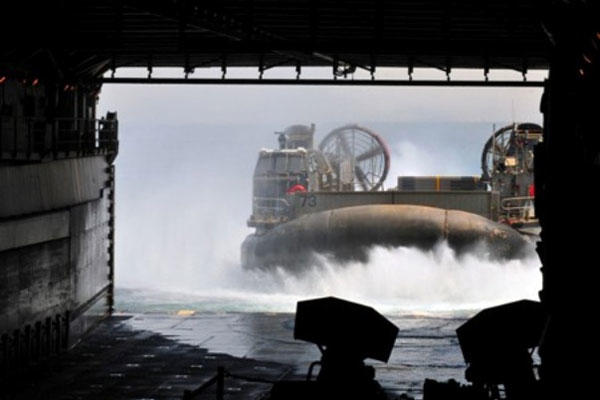After years of believing the Navy would be getting entirely away from ships with well decks -- and designing them with that in mind -- the Navy anticipates returning them to two of its America-class amphibious warships.
The well decks, used to get Marine gear and equipment from ship to shore as part of any amphibious assault, were for a time seen as unnecessary because of airlift -- what was needed ashore would be flown in aboard a CH-53 Sea Stallion or the MV-22 Osprey.
"After Afghanistan and Iraq everything got up-armored, everything got heavier," Navy Capt. Chris Mercer said on Wednesday during a briefing at the annual Sea-Air-Space Expo at National Harbor, Md. "So what we can lift with the -53 and -22s is getting less and less."
With that in mind, the Navy will be returning the well deck to some of the amphibious landing ships it will be procuring in future years. Those currently being built will not have that asset. They are based on the old Tarawa-class amphibious ship, but minus the well deck.
The America, the first ship in the group, was christened late last year but has not yet joined the fleet. The second, to be named the Peleliu, is under construction.
Another three are planned, and at least the last two will reportedly restore the well deck.
Original ship plans also have had to be modified to accommodate the aircraft that will be based on them. The MV-22 and the F-35B -- the Marine Corps version of the Joint Strike Fighter -- both generate more heat on the decks than other aircraft.
The Navy found that jet blast from an F-35B could harm flight deck personnel up to 75 feet away from the short take-off line. Osprey operations generate head levels that could damage the deck and environmental controls in the spaces immediately below it.
"We are rapidly understanding these [problems] completely now," Mercer said. He said there are about 14 modifications that need to be made. In some cases it means relocating some deck systems to avoid F-35 and MV-22 approaches.
"As for deck structure … we've got some modifications to do that," he said. These include changing some of the materials used for some of the ships and in other ships adding structure underneath the flight deck at certain spots.
These modifications will also be done to older amphibious landing ships as they go in for maintenance, he said. The later of the new ships will come off the line with the changes already part of their design, he said.



























